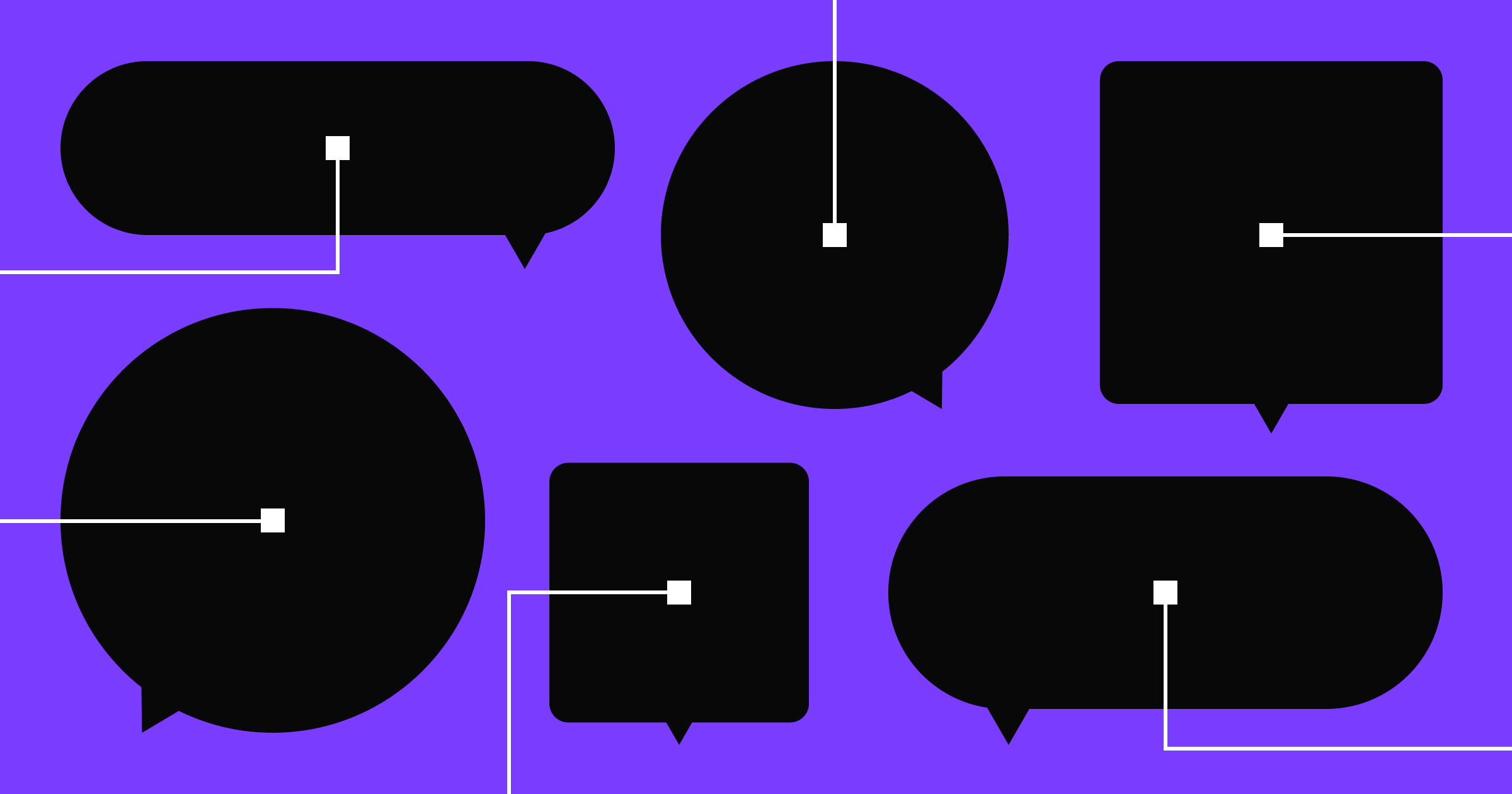Customer retention promotes sustainable growth by maintaining existing clients rather than solely acquiring new ones.
Customer acquisition is a constant goal — but what about the customers you already have?
Repeat business means this audience already values your offering, so it’s likely easier to market new products and services to them. Plus, customer retention strategies turn one-time buyers into loyal patrons, kickstarting long and fruitful relationships that benefit both parties.
What’s customer retention?
Customer retention is your ability to maintain your customer base over time. It involves strategies to keep customers engaged and satisfied long term so they continue using your products and services rather than switching to a competitor. Essentially, you build lasting relationships that encourage brand loyalty and repeat business.
On the other hand, customer acquisition means gaining new customers via marketing and lead generation strategies. Acquisition is typically more costly than retention because you need more resources to reach potential customers and convince them to take action. But the focus is similar: to increase overall revenue.
Why is customer retention marketing important?
Here's why it's essential to retain your clients.
Nurtures customer loyalty
Customer retention efforts directly contribute to nurturing brand loyalty — by consistently delivering value, you can create strong relationships with customers. Loyal buyers provide a reliable revenue stream during peak business periods and tough economic times. They also become brand advocates, recommending your brand to others.
Boosts customer lifetime value
Customer lifetime value (CLV) is an estimation of the total revenue earned from a customer. Effective consumer retention strategies increase CLV since satisfied clients tend to make repeat purchases and increase their spending incrementally. Boosting the duration and quality of relationships helps increase profitability from each account, reducing the marketing costs associated with frequent turnover.
Favorable word-of-mouth
Satisfied customers are the most effective brand promoters and the likeliest to share positive experiences with friends, family, and colleagues. Organic promotion is valuable for attracting new customers, as personal recommendations carry a level of trust greater than corporate advertising. Investing in retention strategies can turn each happy client into a brand advocate, extending your reach and influence.
How to calculate customer retention rate
While you might have a rough idea of your company's performance, you need an unbiased, objective metric to measure retention. The formula is a simple yet powerful indicator for understanding the health of customer relationships.
Customer retention rate (CRR) = [ Number of customers at end of period (CE) - Number of new customers acquired during period (CN) / Number of customers at start of period (CS) ] x 100
Formula breakdown
- Number of customers at start of period (CS) — This represents the total number of customers at the beginning of the period you're analyzing.
- Number of customers at end of period (CE) — This includes the total number of customers you have at the end of the period, old and new.
- Number of new customers acquired during period (CN) — These are the new customers acquired during the period.
The formula measures the proportion of the starting customer base retained after accounting for new customers. It helps differentiate between growth due to new acquisitions and actual existing customer retention.
Example
Say you run a subscription-based service. At the beginning of the year, you have 1,000 subscribers (CS). Throughout the year, 250 subscribers cancel, but you gain 400 new ones (CN). At the end of the year, you have 1,150 (CE).
Your CRR would be:
CRR = (1,150 - 400 / 1,000) x 100 = 75%
This means you retained 75% of your client base over the year.
Critical retention factors
- Choose a specific period — You can measure CRR over different periods (monthly, quarterly, or annually), so choose one that works best for your business cycle.
- Define your customer — Specify who counts as a customer for your business. For example, a customer for a subscription-based service might be anyone who has an active account.
- Track CRR regularly — Trends and preferences fluctuate and evolve, so it's essential to calculate your CRR routinely to understand how strategies impact consumers and increase the customer retention rate.



















The marketer’s website
Our free ebook exclusively for marketers. Discover how no-code eliminates developer bottlenecks and empowers modern marketing teams to truly own the website.
6 effective client retention strategies
To create long-term relationships that bring value to both customers and your organization, consider these six effective retention strategies.
1. Establish strong relationships through personalization
Buyers who feel connected to your brand are likelier to promote your offerings and stay loyal in the long run. Regularly engage them with personalized experiences, making them feel valued and uniquely catered to.
For example, you can use heatmaps and data visualization tools to analyze behavioral data and recommend new products. You can also leverage automation software to create targeted messages, like offering exclusive discounts to regular buyers.
2. Deliver exceptional customer service
High-quality customer interactions set you apart from competitors that offer similar products, helping you build a positive brand reputation.
Ensure your service team has the know-how and empathy to resolve issues quickly. Implement a multichannel support system that provides help across phone, email, and social media channels. You can also use a website chatbot to offer 24/7 availability.
3. Regularly collect feedback
Use website surveys, email feedback forms, and direct communication (phone calls and text messages) to gauge buyer satisfaction. Regular input collection helps you understand consumer needs and expectations as they evolve to improve your offerings. It also shows customers you value their opinions, increasing their commitment to your company.
For example, you could send a message to customers after each resolved support ticket asking them to rate their experience and suggest improvement areas.
4. Offer post-sales support
Along with stellar service, effective post-sales support keeps customers happy after purchasing. It also encourages them to engage in repeat business and contribute to positive word of mouth. You can offer care beyond basic troubleshooting, including onboarding videos, usage tips, and proactive check-ins.
A cybersecurity company, for instance, can offer round-the-clock technical support with monthly audits and satisfaction surveys to resolve issues.
5. Offer loyalty programs
Loyalty programs encourage repeat purchases by rewarding clients for their continued commitment. These programs maintain customer interest and engagement, motivating them to stick with your brand over competitors.
You can expand your reach by including exclusive coupons, discounts, and referrals. For example, a cloud storage platform may offer a loyalty card that provides a two-month add-on after customers extend their subscription for the first year.
6. Integrate gamification into loyalty initiatives
Gamification adds a fun and competitive element to engagements. Use challenges, such as points, badges, and leaderboards, to reward shoppers for their business and encourage ongoing participation.
For example, a rewards-based credit card payment app might allow clients to earn points not only for purchases but also for participating in monthly challenges and sharing results on social media. Top scorers could receive cash back and early access to new services.
Invest in long-term client relationships
Thriving in today's market means you can't lose new or existing customers to competitors. With Webflow Enterprise, you can create customer-centric websites that deliver positive experiences, encouraging visitors to keep coming back.
Plus, Webflow readily integrates with popular client relationship management (CRM) tools and marketing-automation software to improve retention strategies and client support. Grow your online presence with Webflow today.

Webflow Enterprise
Trusted by over 300,000 of the world’s leading brands, Webflow Enterprise empowers your team to visually build, manage, and optimize sophisticated web experiences at scale — all backed by enterprise-grade security.






























